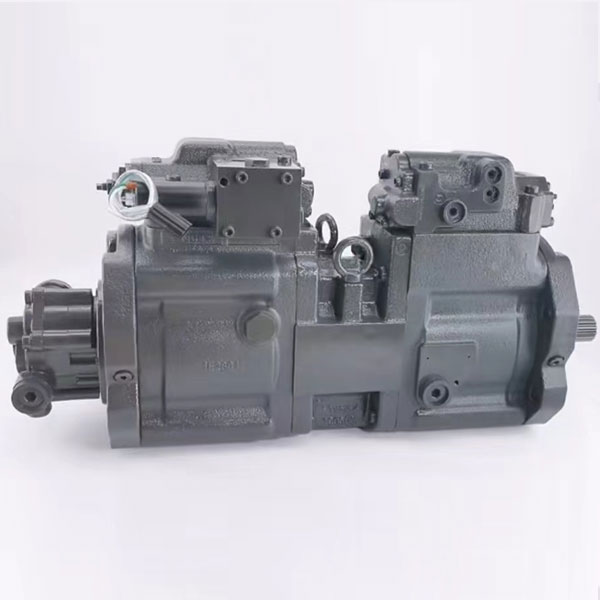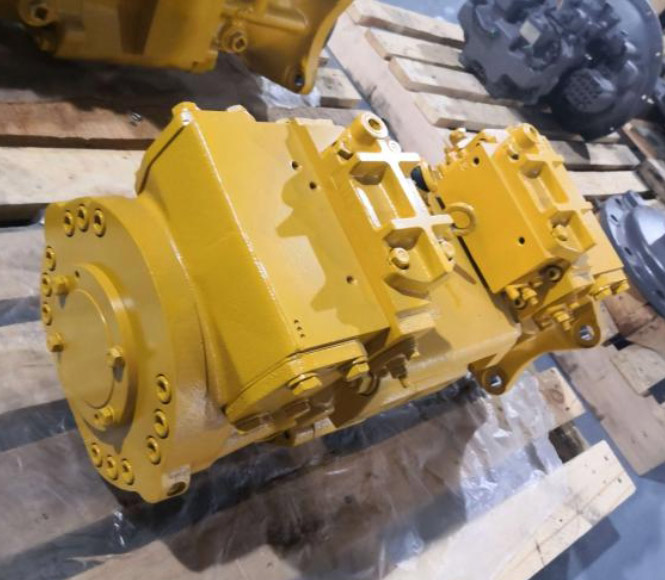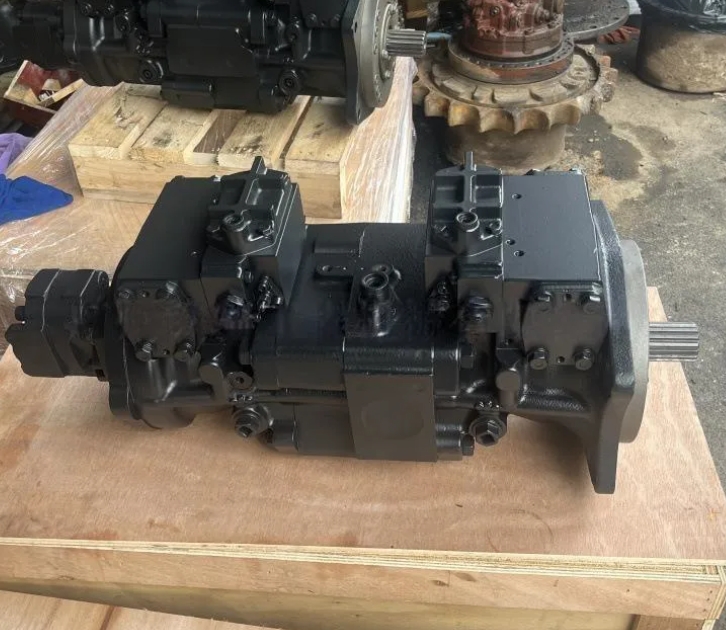
Hydraulic pumps play a vital role in the functionality of various machinery, including excavators, loaders, and other heavy equipment. However, when issues arise with the hidrauliskais sūknis, it is crucial to address them promptly and effectively to ensure optimal performance and longevity of the system. In this comprehensive guide, we will delve into the intricate process of repairing a hydraulic pump, step by step, to help you navigate common issues and restore your hydraulic system to peak efficiency.
Step 1: Identifying the Root Cause
The process of repairing a hydraulic pump begins with identifying the root cause of any performance issues that may be affecting its operation. This initial step is crucial in determining the specific problem that needs to be addressed to restore the pump to optimal functionality. Common issues that may indicate a problem with the hydraulic pump include a loss of pressure, unusual noises, or fluid leakage. By conducting a systematic inspection and diagnosis, you can pinpoint the exact issue that requires attention and develop a targeted repair strategy.
When identifying the root cause of a hidrauliskais sūknis issue, it is essential to approach the diagnosis methodically and systematically. Begin by observing the pump’s performance during operation, paying close attention to any abnormal symptoms or behaviors. A sudden loss of hydraulic pressure, for example, could be indicative of a leak in the system or a malfunctioning pump. Unusual noises, such as grinding or knocking sounds, may suggest internal component damage that requires investigation. Additionally, visible fluid leakage around the pump or within the hydraulic system could signal a problem with seals, fittings, or other components.
To effectively identify the root cause of the hydraulic pump issue, it is recommended to refer to the manufacturer’s documentation and service manual for your specific equipment. These resources often contain valuable information on common problems, troubleshooting steps, and maintenance procedures tailored to your pump model. By following the manufacturer’s guidelines and leveraging technical expertise, you can streamline the diagnostic process and ensure an accurate assessment of the problem.
In conclusion, the first step in repairing a hydraulic pump is to identify the root cause of any performance issues. By systematically analyzing symptoms, conducting thorough inspections, and referencing relevant resources, you can pinpoint the specific problem affecting the pump’s operation. This proactive approach sets the stage for effective repairs and lays the foundation for restoring optimal functionality to the hydraulic system.
Step 2: Safely Shutting Down the System
When it comes to repairing a hydraulic pump, safety is paramount. Before initiating any repair work on the hydraulic system, it is essential to safely shut down the equipment and relieve all pressure within the system. This precautionary measure not only minimizes the risk of accidents or injuries during the repair process but also creates a secure environment for maintenance operations.
To safely shut down the hydraulic system, begin by following the manufacturer’s recommended shutdown procedures outlined in the equipment manual. This may involve deactivating power sources, shutting off hydraulic controls, and allowing the system to come to a complete stop. Once the equipment is powered down, it is important to relieve any residual pressure within the hydraulic system to prevent unexpected movement or release of hydraulic fluid.
Relieving pressure from the hydraulic system can be accomplished by activating pressure release valves, retracting hydraulic cylinders, or operating control levers to release any trapped pressure. It is crucial to follow proper safety protocols and procedures to ensure that pressure is fully dissipated before proceeding with any repair work on the hydraulic pump. By taking the time to safely shut down the system and relieve pressure, you create a secure working environment that minimizes risks and facilitates a successful repair process.
Step 3: Comprehensive Leak Inspection
A careful and detailed examination of all connections, fittings, and seals is vital to detect any potential leaks within the hydraulic system. By conducting a thorough inspection, technicians can identify any signs of leakage early on, allowing for prompt repairs to prevent further damage. Leaks in a hydraulic system can lead to decreased efficiency, component wear, and potential safety hazards. Therefore, regular inspection and maintenance are essential to ensure the smooth and reliable operation of the pump.
During the inspection process, technicians should pay close attention to all connection points, such as hoses, tubes, and fittings, as well as seals and gaskets. Any visible signs of leaks, such as dripping fluid, oily residue, or unusual sounds, should be carefully noted and addressed promptly. Additionally, utilizing specialized tools and techniques, such as pressure testing, can help pinpoint hidden leaks that may not be immediately visible.
By prioritizing leak detection and repair as part of routine maintenance procedures, operators can prolong the lifespan of the hydraulic system, minimize downtime, and enhance overall system performance. Preventative measures, such as using high-quality seals and regularly tightening connections, can also help reduce the likelihood of leaks occurring in the future.
Step 4: Flushing and Purifying the System
In instances where fluid contamination is suspected within the hydraulic system, performing a thorough flushing procedure and replenishing it with clean, manufacturer-recommended hydraulic oil is crucial for system integrity and performance. Contaminants such as dirt, debris, water, or degraded oil can compromise the efficiency and reliability of the system, leading to potential component failure and reduced operational lifespan.
The flushing process involves circulating a specialized cleaning solution through the hydraulic system to remove any contaminants and residues. It is essential to follow manufacturer guidelines and recommendations for the type of cleaning solution and procedure to ensure thorough purification without causing damage to system components. Once the flushing is complete, replenishing the system with fresh hydraulic oil that meets the specified requirements is essential to maintain optimal performance and protect system components from wear and damage.
By regularly purging and purifying the hydraulic system, operators can prevent issues related to fluid contamination, such as corrosion, oxidation, and reduced lubrication effectiveness. This proactive maintenance approach helps uphold system reliability, extend component lifespan, and minimize the risk of costly repairs or downtime due to fluid-related issues.
Step 5: Monitoring and Sustaining Filter Integrity
The integrity of filters within the hydraulic system plays a critical role in ensuring efficient fluid filtration, preventing contamination, and maintaining the smooth operation of the hydraulic pump. Regular monitoring, inspection, and maintenance of filters are essential tasks that help optimize system performance, protect sensitive components, and prolong the lifespan of the hydraulic system.
During routine maintenance checks, technicians should inspect filters for signs of clogging, damage, or wear that may impede proper fluid flow and filtration. If any issues are detected, filters should be promptly cleaned or replaced with compatible replacements to maintain optimal filtration efficiency. Following manufacturer guidelines for filter maintenance and replacement intervals is key to preserving filter integrity and preventing potential system issues.
By upholding filter integrity through regular monitoring and maintenance practices, operators can safeguard the hydraulic system against contaminants, excessive wear, and performance degradation. Clean and functional filters contribute to the overall reliability and efficiency of the system, ensuring smooth operation and minimizing the risk of costly repairs or downtime due to compromised filtration.
Step 6: Resolving Cavitation Concerns
When cavitation is detected within the hydraulic system, it is crucial to conduct a thorough examination to identify any potential causes contributing to this issue. Cavitation occurs when vapor bubbles form in the fluid due to low pressure areas, leading to potential damage to system components and decreased pump efficiency. By addressing cavitation concerns promptly, operators can prevent further damage and ensure the smooth operation of the hydraulic pump.
To address cavitation, technicians should inspect the system for any obstructions, blockages, or restrictions that may be causing fluid flow disruptions and creating low-pressure zones. Additionally, verifying that the fluid levels are correct and maintaining proper system pressure are essential steps in mitigating cavitation risks. By resolving these issues and ensuring optimal system conditions, operators can minimize the likelihood of cavitation occurring and protect the pump from potential damage.
Implementing preventative measures, such as regular system checks, proper maintenance, and adherence to operating guidelines, can help reduce the risk of cavitation and prolong the lifespan of the hydraulic system. By proactively addressing cavitation concerns and maintaining optimal system conditions, operators can safeguard system integrity, enhance performance, and minimize downtime associated with pump failures.

Step 7: Temperature Monitoring and Control
Monitoring the temperature of the hydraulic system is a critical aspect of preventative maintenance to prevent overheating and potential damage to system components. Elevated temperatures can lead to fluid degradation, reduced lubrication effectiveness, and increased wear on system components, ultimately impacting the overall performance and longevity of the hydraulic pump.
Operators should implement temperature surveillance measures, such as installing temperature sensors and gauges, to continuously monitor system temperatures during operation. Regularly monitoring temperature trends and identifying any deviations from normal operating ranges can help operators detect potential issues early and take corrective actions to prevent overheating.
If elevated temperatures are detected, operators should consider implementing supplementary cooling measures, such as installing additional cooling fans or heat exchangers, to help regulate system temperatures and prevent overheating. Addressing root causes of high temperatures, such as inadequate cooling capacity or excessive fluid friction, is essential to maintaining optimal system performance and preventing thermal-related damage.
By prioritizing temperature monitoring and control as part of routine maintenance practices, operators can mitigate the risk of overheating, protect system components from damage, and extend the operational lifespan of the hydraulic pump. Proactive temperature surveillance helps ensure system reliability, efficiency, and longevity, ultimately optimizing overall system performance.
Step 8: Seeking Professional Assistance
In instances where complex hydraulic pump issues arise, seeking the expertise of professional technicians is essential to ensure thorough diagnosis and effective repairs. Professional technicians possess the knowledge, skills, and specialized equipment needed to address intricate hydraulic system challenges and restore optimal functionality.
Engaging the help of experienced professionals can provide operators with peace of mind knowing that their hydraulic system is in capable hands. Professional technicians can conduct in-depth diagnostics, identify underlying issues, and implement targeted solutions to rectify pump problems efficiently and effectively. By entrusting hydraulic system maintenance and repairs to qualified professionals, operators can enhance system performance, minimize downtime, and prolong the lifespan of their equipment.
When faced with challenging hydraulic pump issues that require expert intervention, seeking professional assistance is a proactive approach that can ultimately contribute to the longevity and reliability of the hydraulic system. Collaborating with skilled technicians ensures that hydraulic system maintenance and repairs are conducted with precision and expertise, leading to optimal performance and operational efficiency.
In conclusion, mastering the art of hidrauliskais sūknis repair requires precision, attention to detail, and a systematic approach to addressing common issues. By following this comprehensive guide and implementing proper maintenance practices, you can effectively restore optimal functionality to your hydraulic system and maximize its efficiency and longevity.
